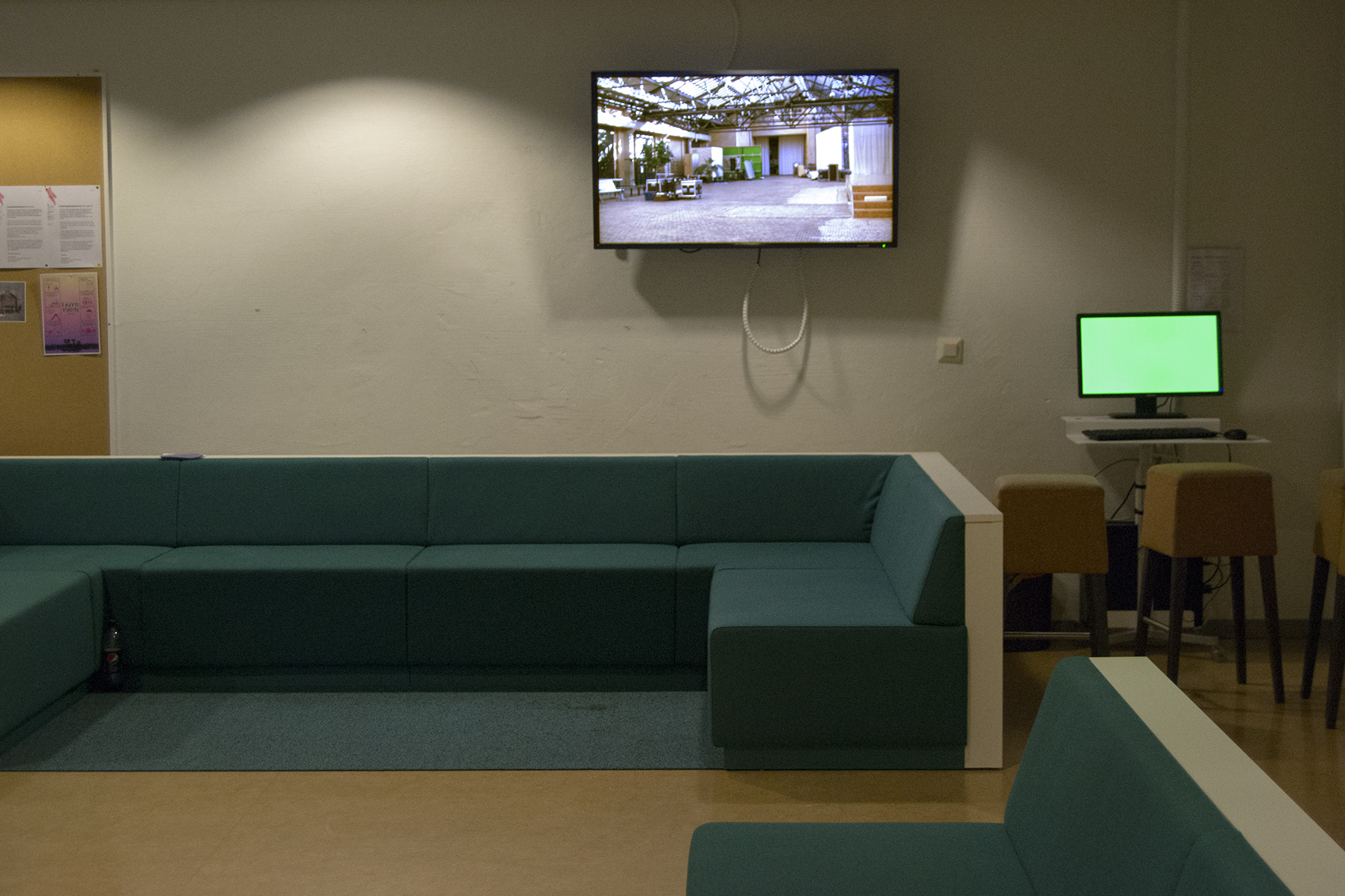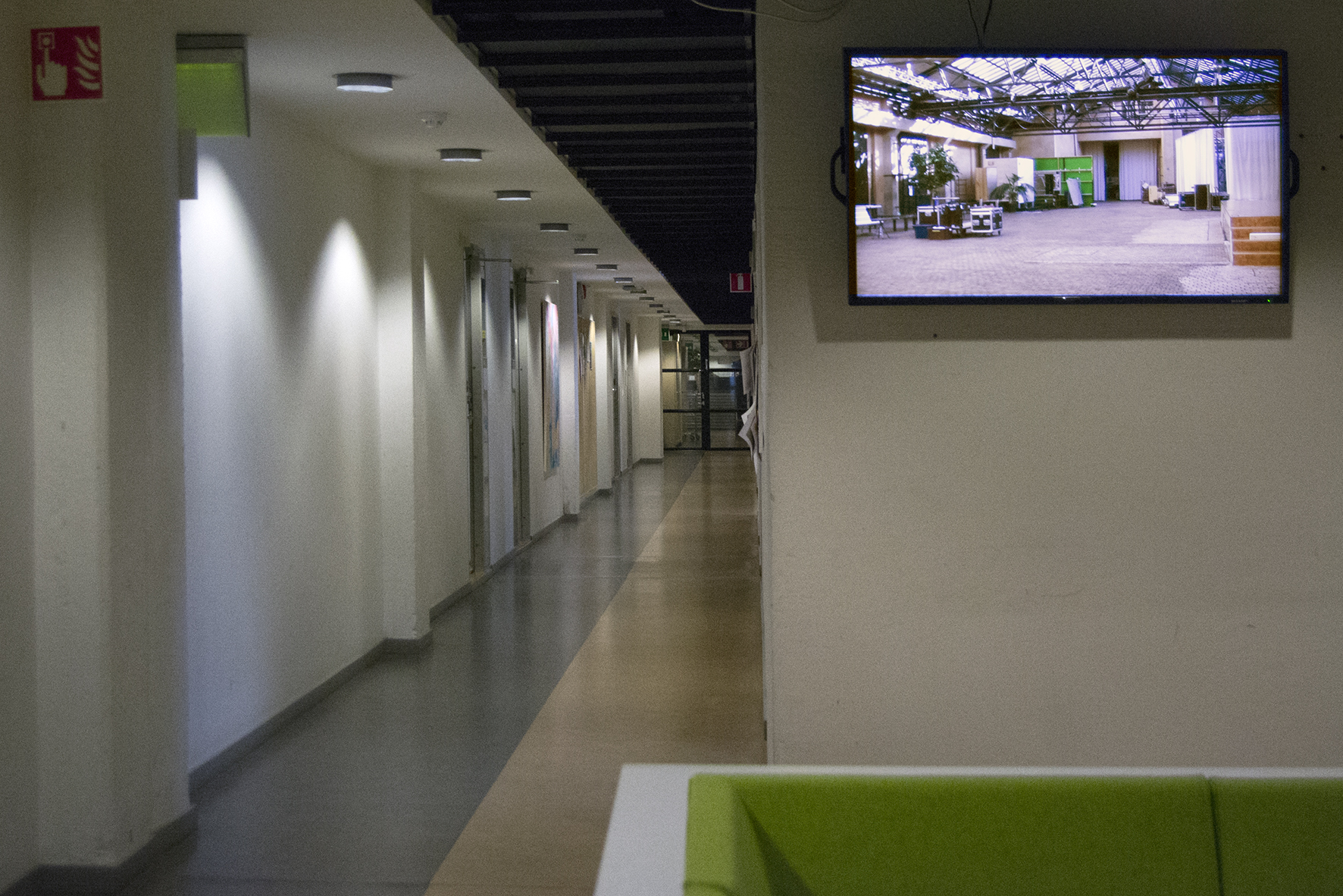Hiding
Hiding is a series of context-dependent and context-responsive video works in which a group of people hide themselves. The people who are hiding are relevant for the chosen place and the context of the place. Hiding examines how a simple video-documented choreographic gesture is contextualized in various locations in order to shift the perception of the site, place, and location in which the work is done.
The project started in 2014 in Reykjavik with the participants of my workshop within the framework of Reykjavik Dance Festival. The next part of the project, Hiding#2, ended up in the Research Pavilion’s exhibition in Venice in 2015. The process continued at Mad House Helsinki in 2015 as Hiding#3. Both works in the Research Pavilion and at the Mad House were realized with the staff of the institution, in the exhibition space of the Research Pavilion, and in the performance space at Mad House.
Later, for the first examined artistic part, in 2016, I made a Hiding#4 video at the Theatre Academy with the personnel of the Performing Arts Research Centre. This video was made in the entrance hall of the Theatre Academy. Hiding#4 was displayed on the info-screens situated around the building of the Theatre Academy once per hour on each screen simultaneously. Thus, it took place all over the Theatre Academy, and the project examined and expanded within these parts the contextualization of the work from one point in the working place to many different simultaneous ones.
From a simple choreographic act to complex contextualization
The choreographic idea of the work is simple: to make and document one simultaneous, multidirectional, choreographic gesture by collaborating with the people who are relevant for the chosen place and context and with the simple walking movement of the collaborators to activate the material conditions of the place as potential hiding spots. In the different versions of the work, this meant to hide among a construction site in Reykjavik, in the performance space at Mad House, in the installed exhibition space of the Research Pavilion, and among the props and sets in the entrance hall of the Theatre Academy.
In Hiding I with the act and process of contextualization as being part of the practice and choreographic work. Simple gesture and its documentation and the contextualization of that documentation together form the choreography I am interested in. The choreographic lived gesture, per se, in the work is very plain, but the contextualization of the documentation adds needed layers for the choreography to operate as an analytic artwork, which exposes hidden quality of the chosen working place. This contextualization is part of the choreographic process and ‘a choreography’ in the sense that I understand choreographic practice to be.
Through this work I have developed contextual and situational sensitivity towards the circumstances in which the artistic work takes place. The contextualization of the Hiding video in various spaces also examined the movement of the viewer on those specific locations by focusing on the relation between the movement that is needed to experience the work and the movement of the viewer that is generated by the work. In Venice the video screen was set in one corner of the exhibition space, and by turning 180° the viewer could see the part of the exhibition space in which the work had been done. In the video, the viewer could see how the curatorial team of the Research Pavilion is hiding in the installed works within the space. In this version, the movement of the viewer plays a crucial, playful part of the work, and I hoped that contextualizing the work this way could be perceived as a choreographic work altogether activated by the viewer and not only through understanding choreography as the documented gesture in the video.
At the Theatre Academy, the viewer had the possibility to see the work on every floor and not necessarily only by the place where the video was done. This displacement brought another temporal layer to the work: the immediate perceptual connection to the materiality of the location was disconnected, so if the viewer chose to watch the work on the fourth floor, for example, s/he could then walk down to the entrance hall and see the actual place where the work was done.
Hiding#4 followed the choreographic idea of the whole first artistic part: works that constituted the entirety of the first artistic part were happening simultaneously in many places, and that is why it was impossible for the viewer to experience them at the same time; instead, by walking or moving from place to place, the first artistic part could be collected work by work. This decision also follows the process of reading, in which various temporal registers operate simultaneously, as I explain elsewhere in this commentary. I am not sure if this idea came through, but it was a conscious decision in order to materialize and experiment with the choreographic thinking that was developing in my research.
Hiding#2 Research Pavilion, in the context of 56th Venice Biennale (2015)
Many thanks to: Anita Seppä, Jan Kaila, Henk Slager, Seppo Salminen
(camera: Vincent Roumagnac)







